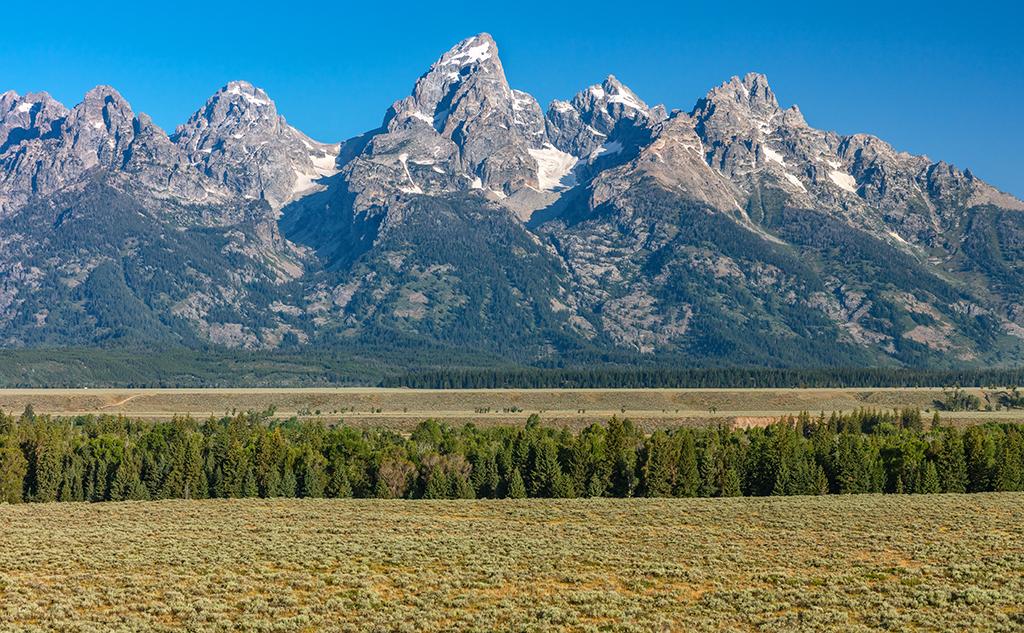Stand at 13,770 feet (4,197 m) atop the “Grand” and spread before you is one of the world's great geologic classrooms. Although the Tetons are one of the youngest ranges in the Rocky Mountains, they contain some of the oldest rocks in North America and their geology is one of the most varied among the world's mountainous regions.

Sunrise over The Grand, Grand Teton National Park / Rebecca Latson
The Grand is an incredible magnet to climbers and nonclimbers alike. It's the biggest stop sign in the West, regardless from which direction you approach. Defining Wyoming's western border, the Grand and her sisters -- Middle Teton and South Teton -- scrape the sky with their distinctive "glacial horns," reminders of the glaciers that helped mold the horizon.
Along with a dozen or so neighboring peaks that rise above 10,000 feet (3,048 m), the Tetons form a jagged stretch of rock that is the Lower 48's most famous mountain range.
Vast inland seas, periodic volcanics, deep glaciations and geologic machinations all played a role in defining the landscape that today retains those events in fossilized plant and dinosaur remains, thick sedimentary rocks, stunning peaks and U-shaped canyons. It was a vast glaciation that arrived 150,000 years ago with rivers of ice 3,000 feet (914 m) thick that sculpted the mountains with cirques and cols and created the Tetons' defining pyramid-shaped peaks.

Valley and mountains, Grand Teton National Park / Rebecca Latson
Uplift of the Teton fault created the landscape you see driving along U.S. Route 191. Stop to view vast valley beyond which those jagged mountains rise abruptly.
As the glaciers retreated, they left behind morainal lakes and kettles -- depressions created when blocks of ice calved from the retreating glaciers. Today we know them as Jenny. Leigh, and String lakes.
Skillet, Teton and Schoolroom glaciers remain today, vestiges of their "Little Ice Age" forefathers of 5,000 years ago.
To read a more detailed description of the geological forces that created this national park, click here.





